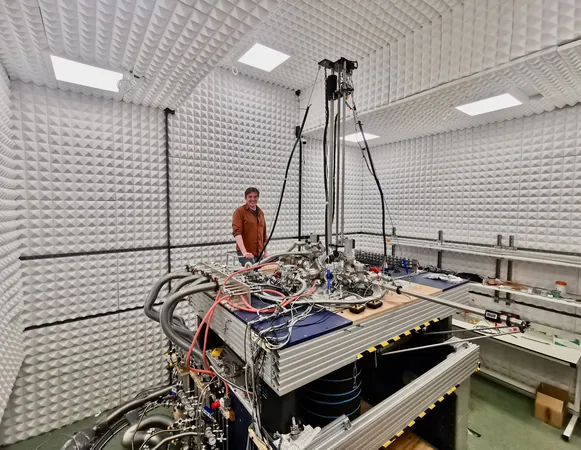
Revolutionizing Quantum Computing: Major Breakthrough in Materials Discovery
2025-05-30
Author: Ming
Breaking New Ground in Quantum Computing Materials
In a groundbreaking study led by Oxford University, researchers have unveiled a powerful technique poised to transform the search for next-generation materials essential for large-scale, fault-tolerant quantum computing. This discovery may finally put an end to a lengthy quest for affordable materials capable of hosting revolutionary quantum particles, paving the way for mass quantum computer production.
Unlocking Unprecedented Computational Power
Quantum computers hold the potential to surpass the capabilities of today’s most advanced supercomputers. Yet, their performance is currently hindered by interactions with the environment that degrade quantum properties, a phenomenon known as quantum decoherence. For decades, physicists have searched for materials that resist this effect, but their quest has faced significant experimental hurdles.
Introducing Topological Superconductors
The Oxford research team has made significant strides by introducing a technique to identify topological superconductors—an extraordinary class of materials that can host elusive quantum particles known as Majorana fermions. These unique particles could change the game by storing information in their shape and structure rather than in their state, making the data far more stable and resistant to local disruptions.
A Game-Changing Discovery with Uranium Ditelluride
In a pivotal finding, the researchers confirmed that uranium ditelluride (UTe2), a material identified in 2019, is indeed an intrinsic topological superconductor. This assertion was groundbreaking in itself, as previous research had only speculated about the presence of topologically protected superconductive states in UTe2.
Utilizing a state-of-the-art scanning tunneling microscope (STM), equipped with a novel technique called the Andreev STM, the researchers achieved high-resolution imaging without relying on light or electron beams. This method specifically targets electrons in a unique quantum state, enabling precise detection of topological surface states.
The Future of Quantum Computing is Bright
While the research confirmed that Majorana particles exist in UTe2, their pairing restricts individual accessibility—a finding that still opens up new avenues for exploration. The Andreev STM technique has emerged as a major breakthrough, offering scientists the ability to accurately assess materials for intrinsic topological superconductivity, which are critical for future quantum computing platforms.
A Leap Towards Economical Quantum Technologies
As the race to harness topological qubits heats up, Microsoft has claimed a lead with the unveiling of the Majorana 1, purportedly the first Quantum Processing Unit powered by a Topological Core. This ambitious project leverages synthetic topological superconductors, but the new discoveries from the Davis Group suggest that simpler, more economical crystalline materials could replace these complex designs.
Expert Insights on a Revolutionary Advance
Professor Séamus Davis from Oxford hailed the invention of the Andreev STM technique and the subsequent findings as monumental achievements in physics, stating they could significantly expedite the identification of materials critical for the quantum computing revolution. Lead author Dr. Shuqiu Wang expressed excitement over the first detection of intrinsic topological superconductivity and anticipated further discoveries that the novel technique may reveal.
Researchers from multiple prestigious institutions also contributed to this transformative study, underscoring a collaborative effort to push the frontiers of quantum technology.


 Brasil (PT)
Brasil (PT)
 Canada (EN)
Canada (EN)
 Chile (ES)
Chile (ES)
 Česko (CS)
Česko (CS)
 대한민국 (KO)
대한민국 (KO)
 España (ES)
España (ES)
 France (FR)
France (FR)
 Hong Kong (EN)
Hong Kong (EN)
 Italia (IT)
Italia (IT)
 日本 (JA)
日本 (JA)
 Magyarország (HU)
Magyarország (HU)
 Norge (NO)
Norge (NO)
 Polska (PL)
Polska (PL)
 Schweiz (DE)
Schweiz (DE)
 Singapore (EN)
Singapore (EN)
 Sverige (SV)
Sverige (SV)
 Suomi (FI)
Suomi (FI)
 Türkiye (TR)
Türkiye (TR)
 الإمارات العربية المتحدة (AR)
الإمارات العربية المتحدة (AR)